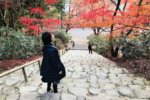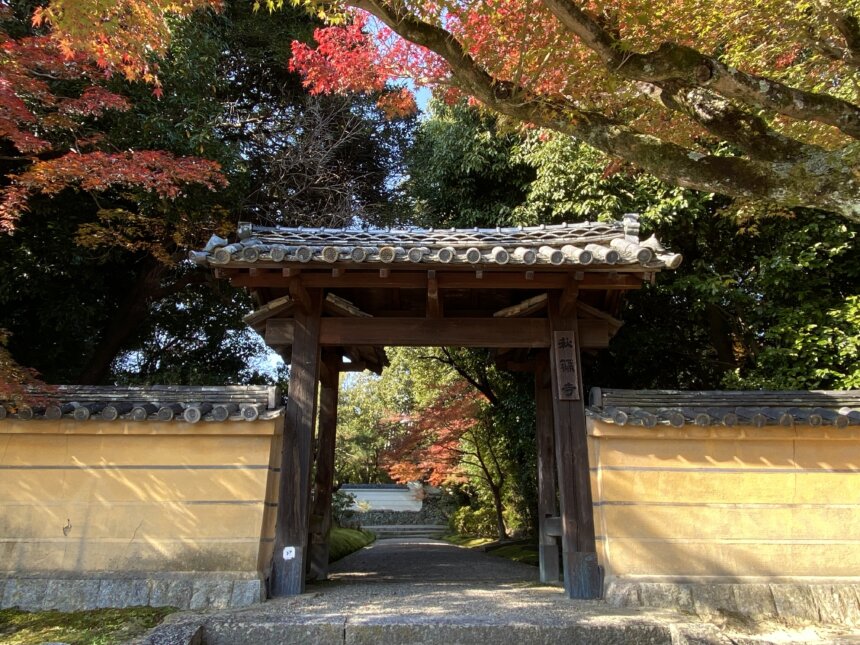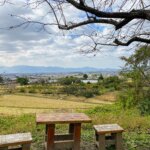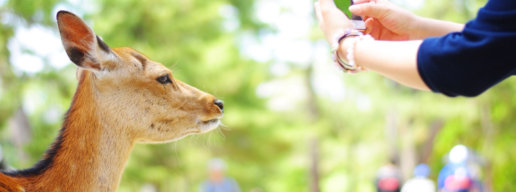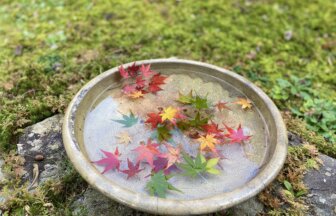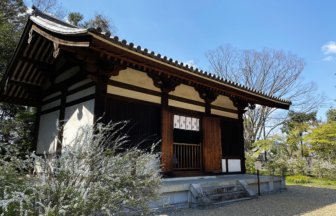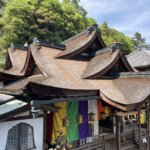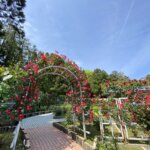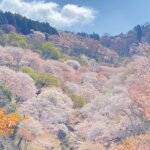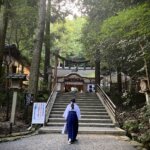Located about five kilometers from the center of Nara, Akishino-dera is a temple full of peacefulness and tranquility. Here, there are not many visitors, just because there are few famous shrines, temples or tourist attractions in the vicinity. This makes it difficult to include this temple in a travel plan. Still, Akishino-dera, which is famous for the statue of Gigeiten (Heavenly Maiden of Artistry), is worth visiting.
It was founded around 780, according to a document compiled by Imperial command in 797. Akishino-no-miya, the title of the Crown Prince, the younger brother of the Japanese Emperor, was named after this area.
The gate nearest to the bus stop is the East Gate. As you go through the gate and walk along the approach, you will find a space where trees are flourishing and casting shadows on the ground covered with beautiful moss. The only sound you hear is the song of birds. It is unbelievable that you are in the midst of a residential area.
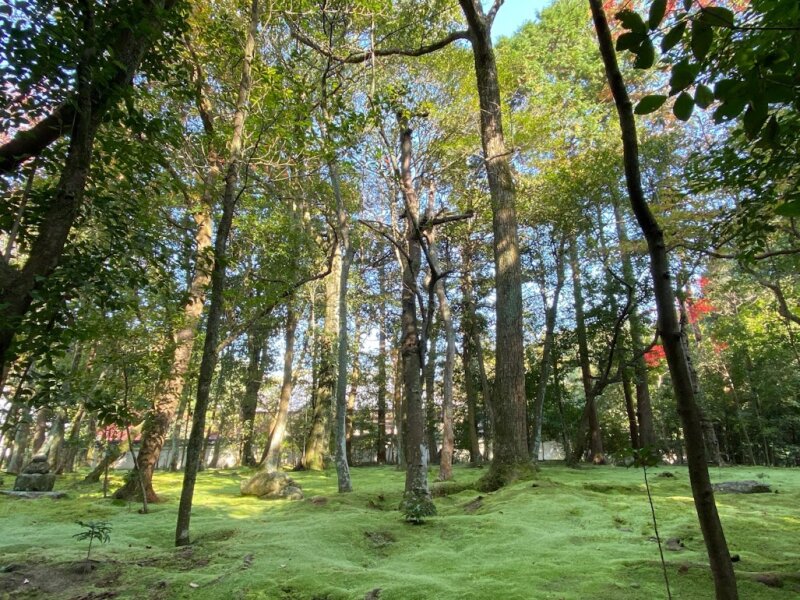
As you proceed, you will be led to an open space and a modest one-story building will come into sight. It is the Main Hall. The building itself is a National Treasure.
Daigen-do Hall, Kaizan-do Hall and Main Hall
Inside the building, there is a long, narrow platform along a wall. In the center is a sitting statue of Yakushi Nyorai, meaning Buddha of Medicine. With plump cheeks and a square chin, he has a dignified appearance and holds a small medicine jar in his left hand.
The two whitish statues on the right and left of the Yakushi Nyorai are Nikko Bosatsu and Gakko Bosatsu. The relatively large statues on the ends of the platform are Taishakuten on the right and the famous Gigeiten (Heavenly Maiden of Artistry) on the left. Created in the late eighth century, this is the only Gigeiten in Japan. Although the body of the statue was destroyed in a disaster and recreated around the 13th century, it perfectly matches with the head, which is the original part of the statue.
To see the Gigeiten, visit the official JR Tokai website.
https://nara.jr-central.co.jp/campaign/gallery/_img/poster/2013_akishinodera_l.jpg
As there is no glass sheet or fence separating you from the statue, you can look up at it closely. The Maiden is lit by soft natural sunlight coming through slightly opened windows. With downcast eyes, she has a peaceful and noble expression. The mouth is slightly open, which makes her look as if she is singing. The head is tilted to the left and the waist is also twisted slightly, but the knees are not bent, expressing a subtle and elegant movement. You will see colors such as vermilion and green remaining on the robe.
Gigeiten is believed to be a heavenly maiden born from the hairline of Shiva, one of the principal deities of Hinduism. Because of her appearance and outstanding skills on musical instruments, she is regarded as a goddess of mastery in art. Since the old days, the statue has been worshiped by people who wish to be proficient in singing and dancing. Even today, you will see at the feet of the Maiden many coins, bills and charms donated by such people.
It is worth visiting for anyone involved in performing arts or who love to see beautiful Buddhist statues.
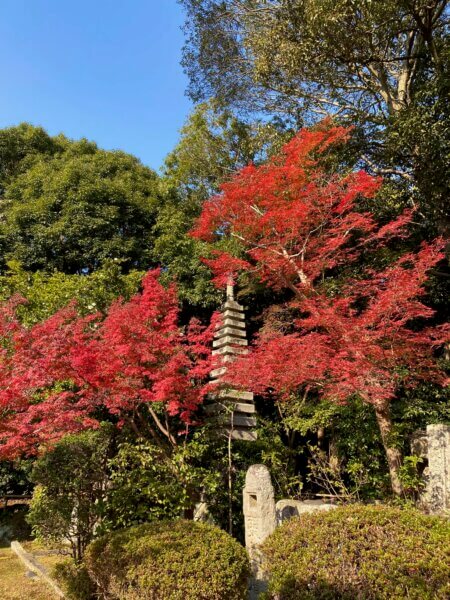
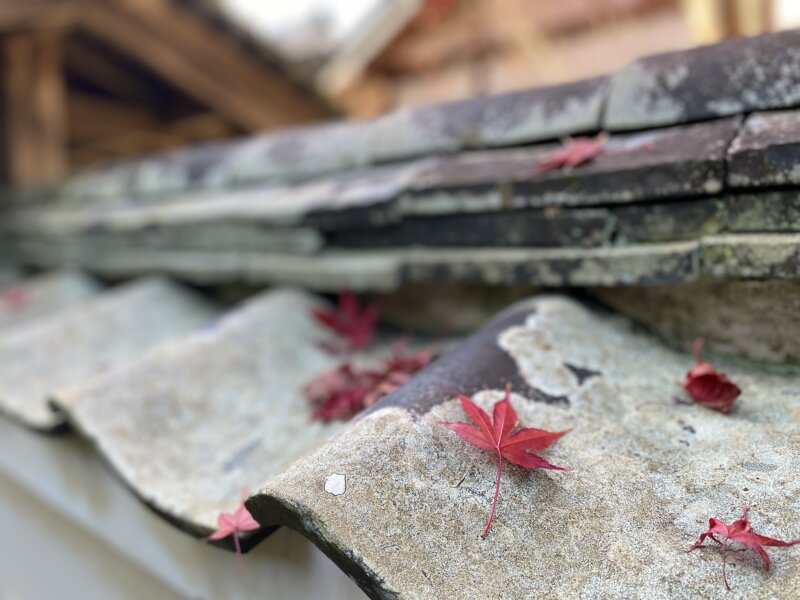
Information:
Hours:
9:30 to 16:30 (No closing days)
Admission:
Adult: 500 yen
Address:
757, Akishino-cho, Nara City, Nara 631-0811 Japan
* You are always asked to check information on the official website before you visit.
http://yamatoji.nara-kankou.or.jp/01shaji/02tera/01north_area/akishinodera/
(Official Nara Prefecture website/Japanese only)
Access:
About one kilometer from Yamato Saidaiji station on the Kintetsu Line.
Take a Nara Kotsu bus at the Number 2 bus stop (to Oshikuma) at Yamato Saidaiji station. It is a one-minute walk from the Akishino-dera stop.
Alternatively, it is a 20-minute walk from Yamato Saidaiji station.

Number 2 bus stop at Yamato Saidaiji station
Last updated: September 29, 2022
Text by: Yumi